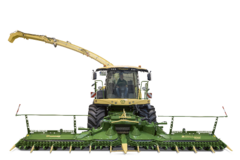AJ Long Contractors is based on the border of North Yorkshire and Lancashire in an area of grass valleys and hills as far as the eye can see. The firm runs
two Class Jaguar 970s, which have a big appetite so keeping ahead is a challenge, even when some customers mow their own grass.
2015 was the Longs’ first foray into the BiG M format with a 420 equipped with groupers. Despite the odd shortfall it still knocked down acres like nothing else. After five
seasons the 420 was upgraded to a BiG M 450. So far they can’t believe the difference. For the first season Josh Long was the main pilot, but we met Calum Smalley two days
into his BiG M operating career, who offered an interesting perspective. Mowing second-cut grass on some relatively flat land for a beef farmer, Calum had been used to mowing with a set of
triples and a tractor, but he took to the BiG M very quickly. “It’s a very easy machine to drive, the view of the mowers is much better than from a tractor, and it’s much easier to turn,” he explains. “You have to
remember not to do so much of a swing on the headlands because it can turn so tight. I’m still learning, but it’s an easy machine to adapt to.” Josh gives not only an operator view, but also looks at it from an
owner’s perspective. “The 420 we had was good but had limits,” he comments. “It wasn’t great on hills and the traction was limited but the 450 is different, it will go most places you’d want to mow, the wheels are
bigger, and it handles much more confidently. The traction control works very well. We use it in mode 2, which is more aggressive and will spin a wheel if you push it hard. In mode 1 it will be very gentle and
keeps it going on steeper banks. “The ride is better too; the new machine has rear suspension as well as front so it’s much smoother,” he continues. The primary function of front suspension is to raise the front
of the machine to accommodate turning over large swaths, while also allowing it to travel on the road at a reduced height. It also provides some operator comfort.
Familiar mowers:
The 9.9m of mowing elements haven’t changed dramatically from the
previous model. The 420 had groupers on the outer mowers, but they weren’t utilised beyond pulling crop from under trees and around posts. As an additional £18,000 on the price tag they weren’t deemed
to be worth it. Much of the grass harvested is tedded out, but when it is dry enough not to need tedding the crops tend to be lighter and a four-rotor rake pulling in 12.5m makes the job more efficient.
The addition of a hydraulic breakback on the outer beds is welcomed, Josh explaining that the old answer was a tie rod that would bend. “We used to carry a spare,” he says, “just in case you hit something, but the
new one resets itself. It’s a great improvement.” Adjusting the angle and down pressure on the mowing beds from the cab is quick and easy, with the option to save settings on a memory
button. “If you’re mowing a lodged crop, you can angle the beds to get under the crop and save that setting, and on the opposite bout have it running in a less aggressive position to avoid stones and scalping etc,” he explains. With easy adjustment, Josh reckons the BiG M wears fewer blades than a triple outfit. “You’ll tend to adjust the machine to the conditions more often so you’re not causing excess wear,” he explains,
although sheer output is where he says this machine wins out. “You just spend more time mowing. With a triple system you spend a lot of time turning and cutting out the half-moons that you leave on corners. Unless you turn very tight the Krone doesn’t do that. The front mower steers, which prevents a lot of that. You can have it linked to the steering to do it automatically but we’ve found that it works better on
manual for corners and hillsides.” Although the BiG M looks a big machine, in the field it handles very well. Josh explains that he would often do two headland bouts on smaller fields and that was enough to turn,
where you’ll need three bouts to leave enough room for a tractor to turn. “The BiG M turns more smoothly too; the wheel motors give really good traction and steering lock, and it doesn’t scrub headlands like a tractor either, unless you really throw it around”.
New power:
On an average day the Krone can comfortably drop 200 acres, 300 on a long day, comfortably operating at 20-25 acres per hour. One of the biggest areas of improvement noticed
on the 450 is the Liebherr engine. The 449hp comes at 1650rpm, which Josh says gives an average two litres of diesel per acre across the season, where the old machine would use
3.5 litres most of the time. The 450 will de-rate to 354hp if the machine doesn’t need all of the power, which on a long day means it often ends with a quarter of a tank of diesel remaining.
The work rate has also been improved by increasing forward speed in the field. The new machine is limited to 25kph, where the previous one topped out at 18kph, so in lighter crops it wasn’t working at optimal capacity but still using more fuel than the 450 in a heavier crop. The Longs run their conditioners at 700rpm with the hoods at the wider end of their adjustment. Power and fuel consumption are greatly impacted if running conditioners at 1000rpm, but Josh says the V-tines are very effective and present the swath well for drying and following equipment. The daily chores are pretty easy thanks to an auto-lube system, with only a few manual grease points at longer intervals. The cooling pack is far away from the action, unlike a tractor, so it stays cleaner, although one issue is having to leave one mower bed down to be able to open
the engine bay and dip the engine oil. The cab comes from the previous generation forager line, although the door opens the opposite way as the steps go up from the front. Both Josh and Calum say it’s pleasant and comfortable, with good visibility to the side mowers due to the slim corner posts. The controls are simply arranged on the multi-function lever and each mower controlled from a dedicated button or lifted and
lowered as a timed group. The screen displays main functions and gives monitoring information. The BiG M is a significant outlay, but for AJ Long, who cut 5500 acres in a season, it does what they feel no
other machine could. The average tractor power in their fleet is 200hp, so they’d need a larger-framed tractor with 300hp to compete in width alone, and even then it wouldn’t compare with output. Add this to the limited versatility of a tractor that size for the rest of the year in a grassland area and the BiG M does make sense. Clocking 250 hours a season, Josh reckons the BiG M and a good driver can do the work of two triple set-ups, which makes the capital outlay plus skilled operators add up in favour of the Krone.
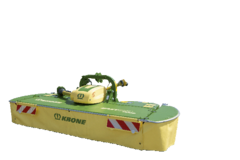
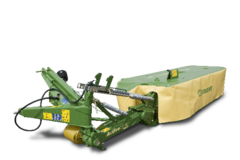
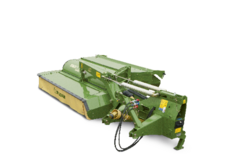
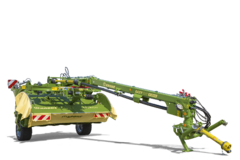
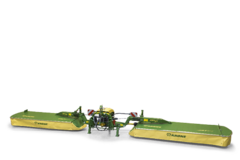
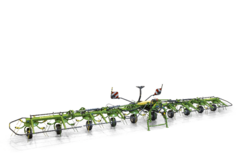
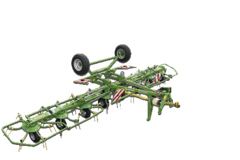
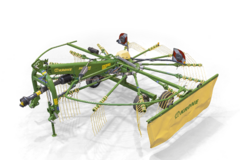

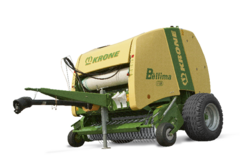


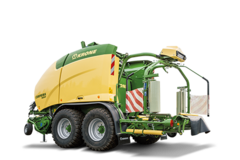
![[Translate to EN:] [Translate to EN:]](/fileadmin/_processed_/1/c/csm_VariPack_Freisteller_01_a70a02f9f9.png)
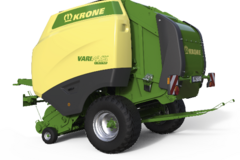

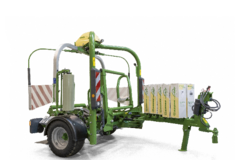
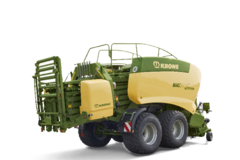
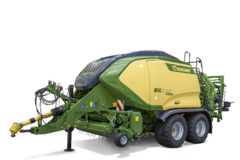
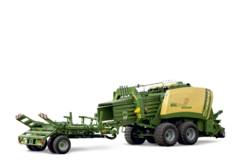
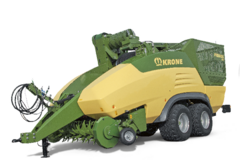
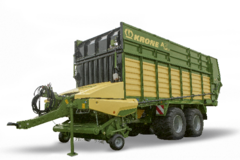
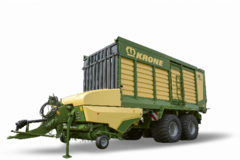
![[Translate to EN (UK):] [Translate to EN (UK):]](/fileadmin/_processed_/4/f/csm_RX_Freisteller_468x468px_6ecb398329.png)
![[Translate to EN (UK):] [Translate to EN (UK):]](/fileadmin/_processed_/0/a/csm_ZX_Freisteller_468x468px_cc1e39f93f.png)

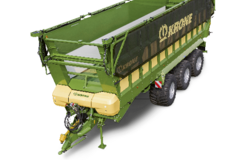
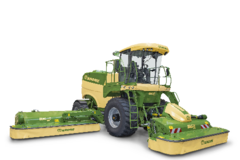
![[Translate to EN (UK):] Testname Forage harvesters - BiG X 480 · 530 · 580 · 630](/fileadmin/_processed_/4/7/csm_BiGX480_Freisteller_468x468px9_1017c2fa62.png)
